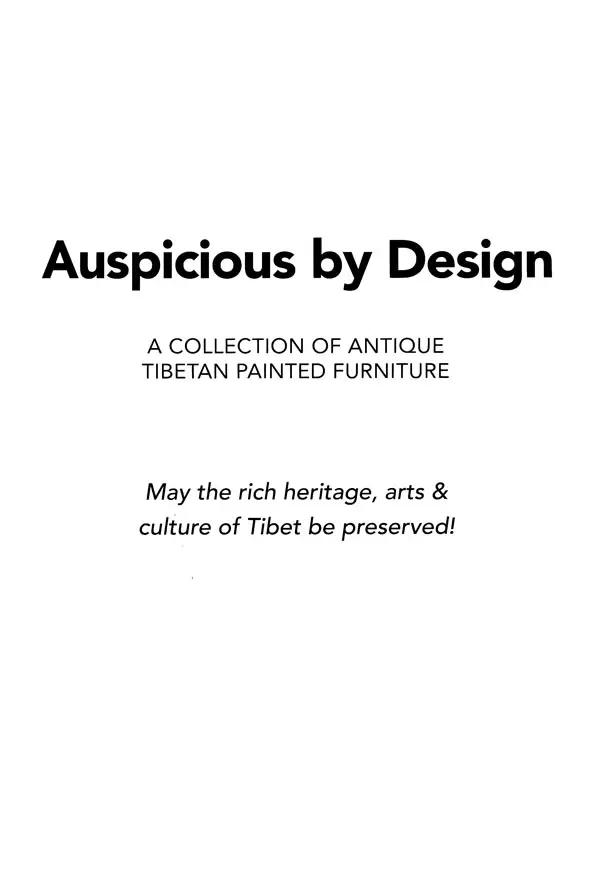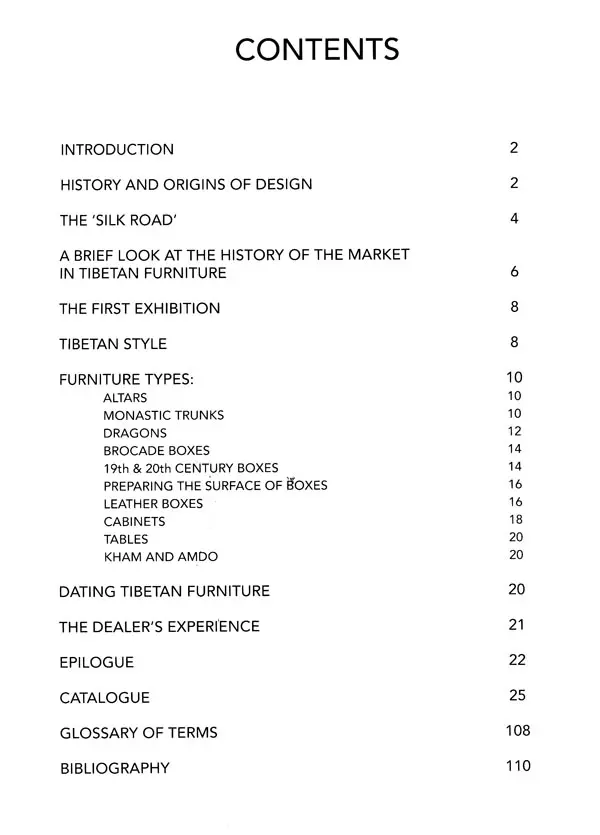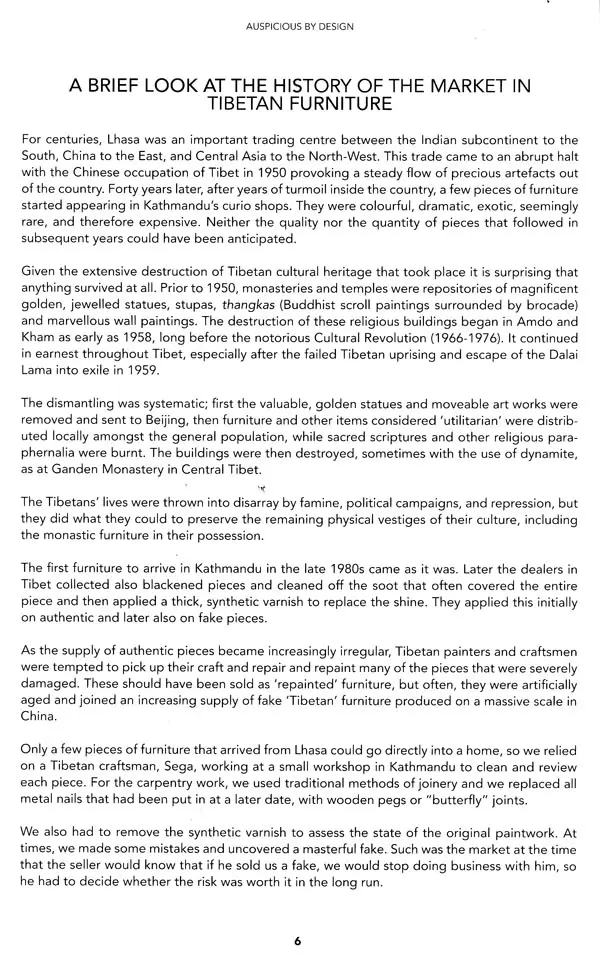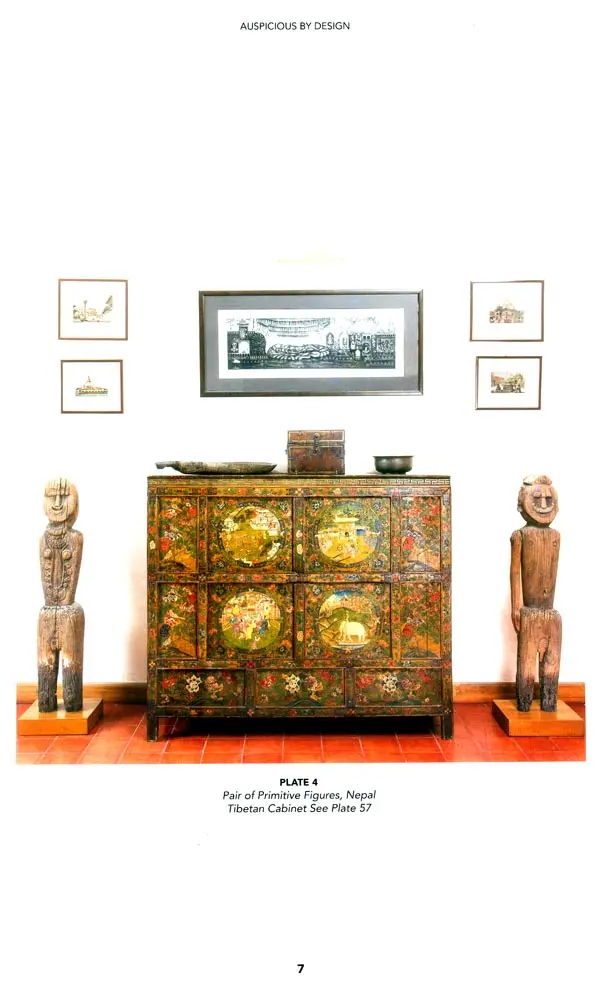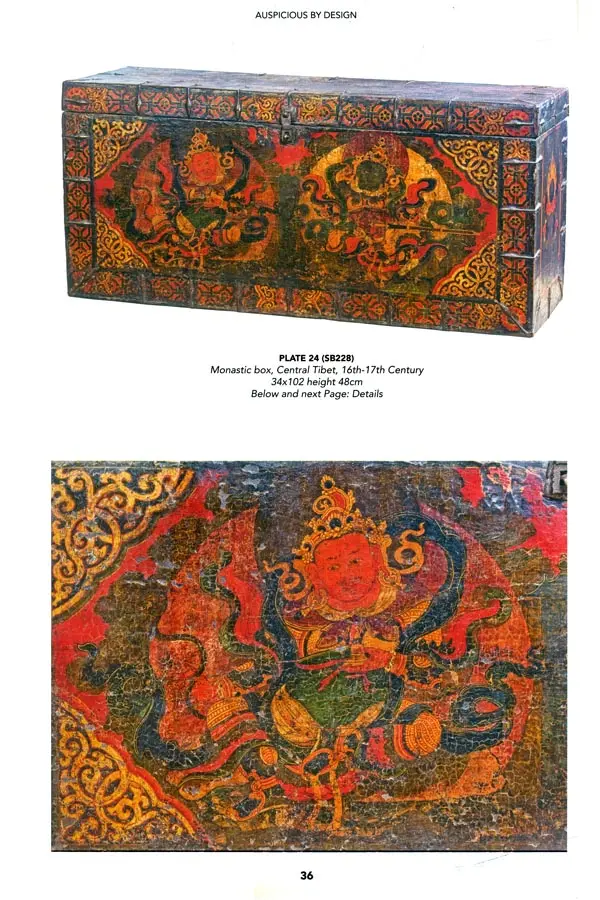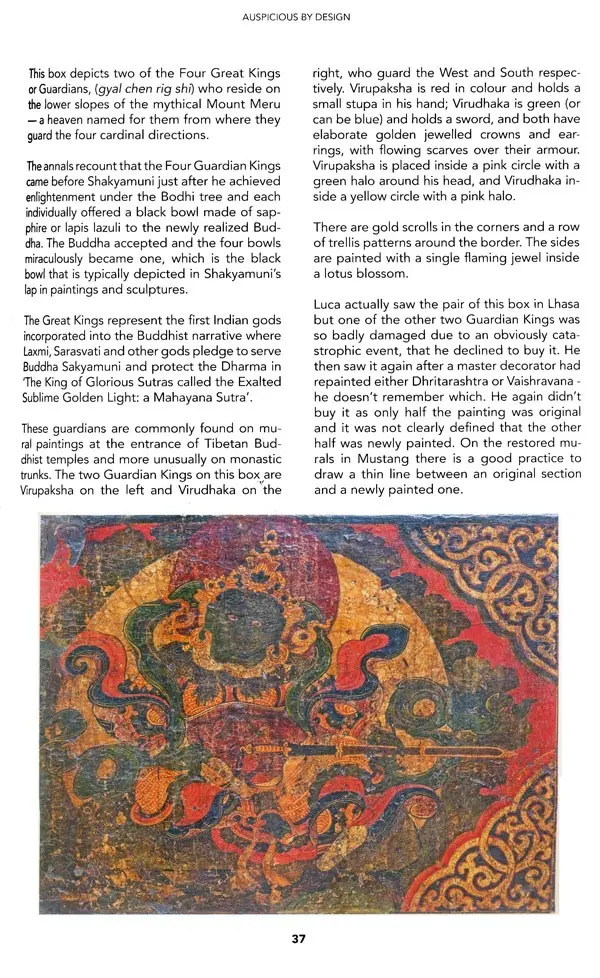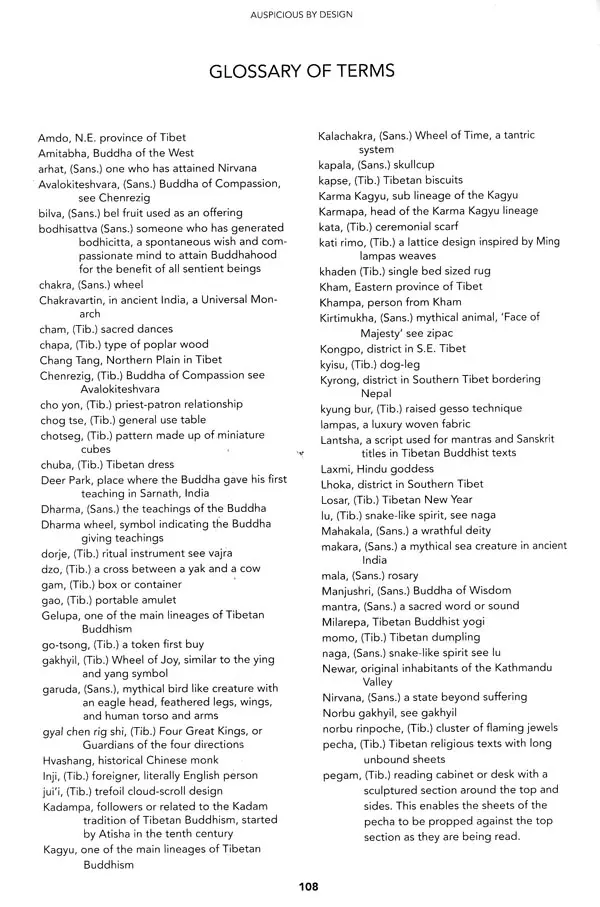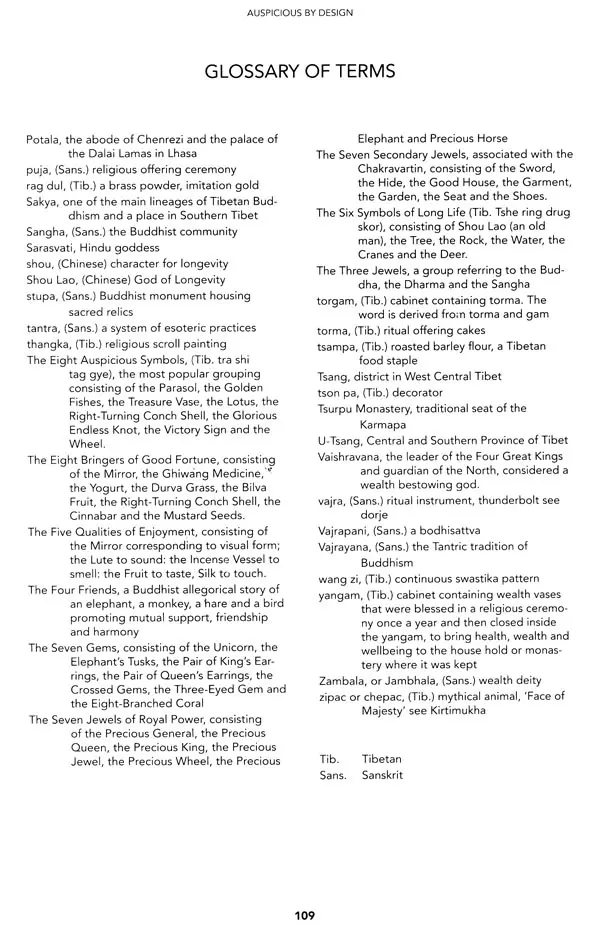
Auspicious By Design- A Collection of Antique Tibetan Painted Furniture
Book Specification
| Item Code: | UAJ394 |
| Publisher: | Mera Publications Pvt. Ltd. |
| Language: | English |
| Edition: | 2021 |
| ISBN: | 9789937088992 |
| Pages: | 110 (Throughout Color Illustrations) |
| Cover: | PAPERBACK |
| Other Details | 12.00 X 8.50 inch |
| Weight | 500 gm |
Book Description
Throughout Tibet, and especially in the capital Lhasa, the Tibetan and Chinese worlds inevitably collided. Old Tibetan houses grouped around ancient temples stood in sharp contrast to new cement buildings springing up everywhere, and modern commercial materialism contrasted with the everyday lifestyle of the religious-minded Tibetans.
This was not the Tibet of the 1940s vividly described in Heinrich Harrer's book Seven Years in Tibet. To visitors from abroad it was still captivating for its timeless traditions. Although the Chinese Communist government began a policy of assimilation and went to considerable lengths to introduce expansive changes in the use of Tibetan language, religion and customs, many of these foreigners wanted to speak Tibetan, study Tibetan texts, eat Tibetan food and wear Ti- betan clothes.
There was so much to explore and so much to learn. Tibetan furniture was not first on the list, but for us it turned out to be another captivating aspect of the culture of Tibet and the start of a deep involvement buying, restoring, and eventually selling some exceptional pieces.
This book is a selection of our collection of authentic, antique pieces of Tibetan furniture collected over the last two decades. It is a tribute to the skilled and ingenious artisans who created each box, table, altar, or cabinet and the fascinating culture that inspired them.
HISTORY AND ORIGINS OF TIBETAN FURNITURE DESIGN
The single most important event that transformed Tibetan culture was the introduction of Buddhism as the state religion in the 7th Century by Emperor Songster Campo and his two foreign wives: the Licchavi Princess Bhrikuti from Nepal, and the Tang Princess Wencheng from China.
Buddhism had a profound effect on all aspects of society and culture, including the use and function of Tibetan furniture.
Another influential factor was the availability of wood, a primary resource. Extensive forests covered the Eastern region of Kham and the province of Kongpo prior to the Chinese occupation and subsequent massive deforestation. However, most of Central Tibet and the northern plain of Chang Tang lie above 3,500 meters in altitude, so the type of timber available was limited to a white, soft poplar, known as chapa, or the more hard-wearing spruce, pine and fir which had to be transported at considerable cost from the Southern district of Lhoka. The idea of leaving this soft wood furniture plain and utilitarian would have been inconceivable to the Tibetans, especially if the pieces were destined for use in monasteries by lamas, or in homes where lamas and dignitaries were invited.
Book's Contents and Sample Pages
